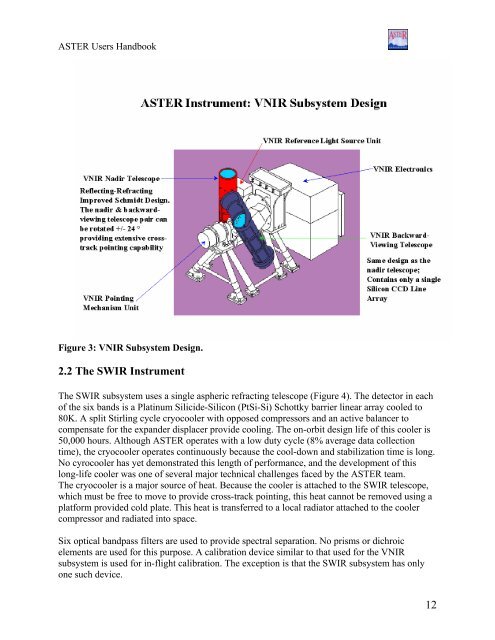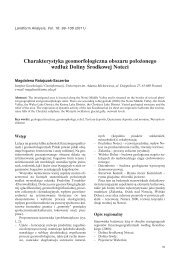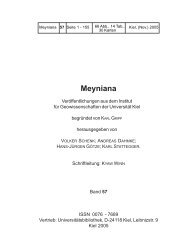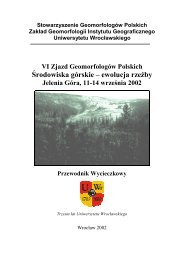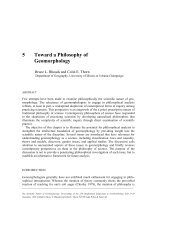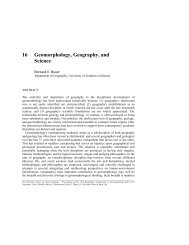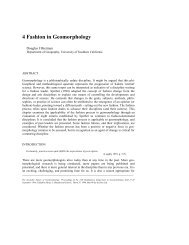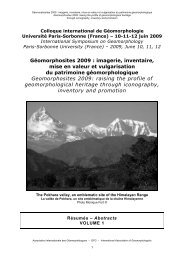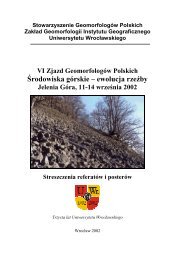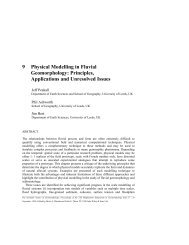ASTER User's Guide - Aster - NASA
ASTER User's Guide - Aster - NASA
ASTER User's Guide - Aster - NASA
Create successful ePaper yourself
Turn your PDF publications into a flip-book with our unique Google optimized e-Paper software.
<strong>ASTER</strong> Users Handbook<br />
Figure 3: VNIR Subsystem Design.<br />
2.2 The SWIR Instrument<br />
The SWIR subsystem uses a single aspheric refracting telescope (Figure 4). The detector in each<br />
of the six bands is a Platinum Silicide-Silicon (PtSi-Si) Schottky barrier linear array cooled to<br />
80K. A split Stirling cycle cryocooler with opposed compressors and an active balancer to<br />
compensate for the expander displacer provide cooling. The on-orbit design life of this cooler is<br />
50,000 hours. Although <strong>ASTER</strong> operates with a low duty cycle (8% average data collection<br />
time), the cryocooler operates continuously because the cool-down and stabilization time is long.<br />
No cyrocooler has yet demonstrated this length of performance, and the development of this<br />
long-life cooler was one of several major technical challenges faced by the <strong>ASTER</strong> team.<br />
The cryocooler is a major source of heat. Because the cooler is attached to the SWIR telescope,<br />
which must be free to move to provide cross-track pointing, this heat cannot be removed using a<br />
platform provided cold plate. This heat is transferred to a local radiator attached to the cooler<br />
compressor and radiated into space.<br />
Six optical bandpass filters are used to provide spectral separation. No prisms or dichroic<br />
elements are used for this purpose. A calibration device similar to that used for the VNIR<br />
subsystem is used for in-flight calibration. The exception is that the SWIR subsystem has only<br />
one such device.<br />
12


